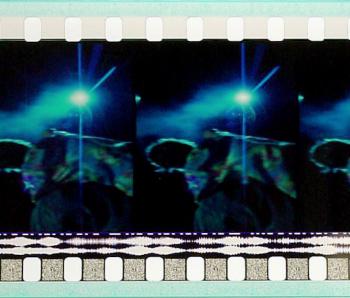

Switching sound recording to digital

The switchover to digital technology in sound recording and television has been relatively smooth, and certainly has avoided much of the angst that has surrounded the introduction of digital technology in filmmaking.
This may be because the old analogue ways of recording both sound and television have always been somewhat arcane. In the beginning, sound waves were transformed into oscillating wave patterns scratched out on a cylinder or disc. Now these wave patterns are stored as magnetic patterns on tape or other electrical media. The adoption of digital recording is simply a change in the way in which the sound is encoded rather than the medium used. Since the original sound has always been recorded in an entirely unrecognisable form, and then converted back to recognisable sound when it’s replayed, the exact form of the signal is not so important provided the conversion process is accurate.
It is the same with television and video recording. Analogue or digital, video or data file, tape or hard disk, or even online storage, it’s all an electronic representation of a visual medium.
Except for the brief period when a film has been photographically exposed but not developed, film carries an analogue visual image all along. Both the original camera negative which captures the scene, and the final projection print that produces the image on the screen, show patterns of light and dark, and of red, green and blue, that directly match the original image.
Unlike a wax cylinder, cassette, videotape or .wav file, images on a reel of film can be recognised directly by eye. Simply unwind a turn or two of film and hold it up to the light. Agreed, that doesn’t provide a moving image — but in the post-apocalyptic scenario beloved of futurists, someone could conceivably work out how to build a projector to play a film simply by looking at the sequence of images on the film (although it would be hard to recover an optical soundtrack on this basis). Designing a gramophone on the basis of examining an LP record is improbable; a video player to unlock the secrets of a videotape recording would be impossible. None of these devices are intuitive in the way they work –- even to a digital generation. It would be just as impossible to recover a digital image into any recognisable form.
For an archivist, then, photochemical film clearly has an advantage over other recording media that is hard to set aside.
Of course, whether it’s picture or sound, it is the duty of the archivist to preserve the replay machine with the media itself, and in a way this brings up another argument in defence of keeping film as film: it’s all about the screening event. Opponents of digital film archiving argue that the film itself is what the original filmmaker intended us to see, and that conversion to digital files is of itself a betrayal of that intention. Watch the joy in the eyes of an old-school film projectionist unpacking and threading up a print of a classic film on a 35mm projector — an experience that’s lacking when you just slip a DVD into a slot or call up a file on a server.
Bizarrely, it seems that the simplicity of the technology, and the complexity of arranging a screening, are both arguments in favour of keeping film as film.
The National Film and Sound Archive of Australia acknowledges Australia’s Aboriginal and Torres Strait Islander peoples as the Traditional Custodians of the land on which we work and live and gives respect to their Elders both past and present.


